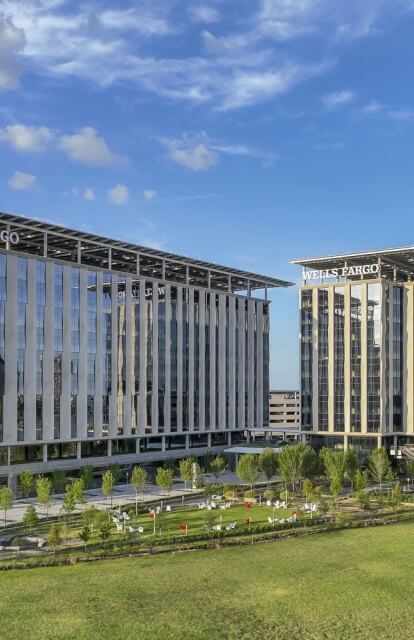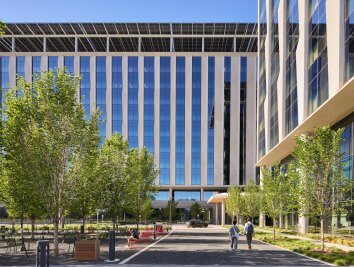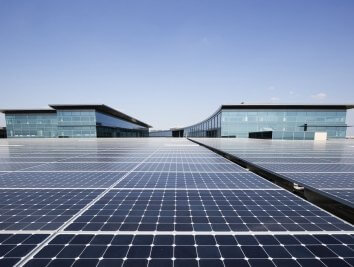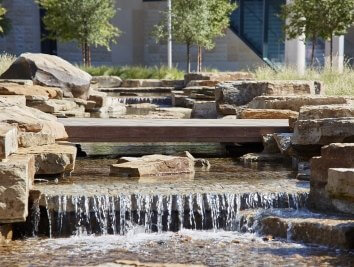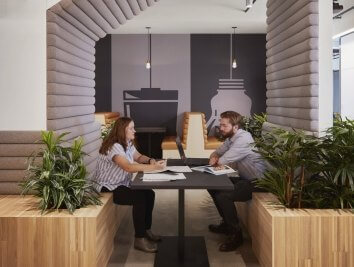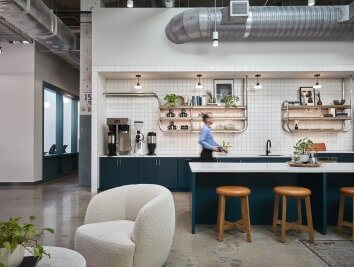Beyond LEED: Wells Fargo’s DFW Campus
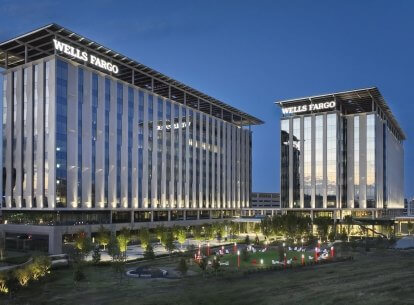
Corgan's net-positive project for Wells Fargo, a thoughtfully designed sustainable campus in Irving, Texas, goes beyond net zero to generate more energy onsite than it consumes. An office project of this scale that’s net-positive has never been done before — an aspirational goal and one our team is thrilled to attain. Currently under construction, the development will consist of two 10-story office buildings connected to a parking garage via skybridge.
Sustainable design is more than just numbers and checklists. It’s a holistic approach that addresses the needs of the present with a comprehensive understanding of the impact design can have on the future.
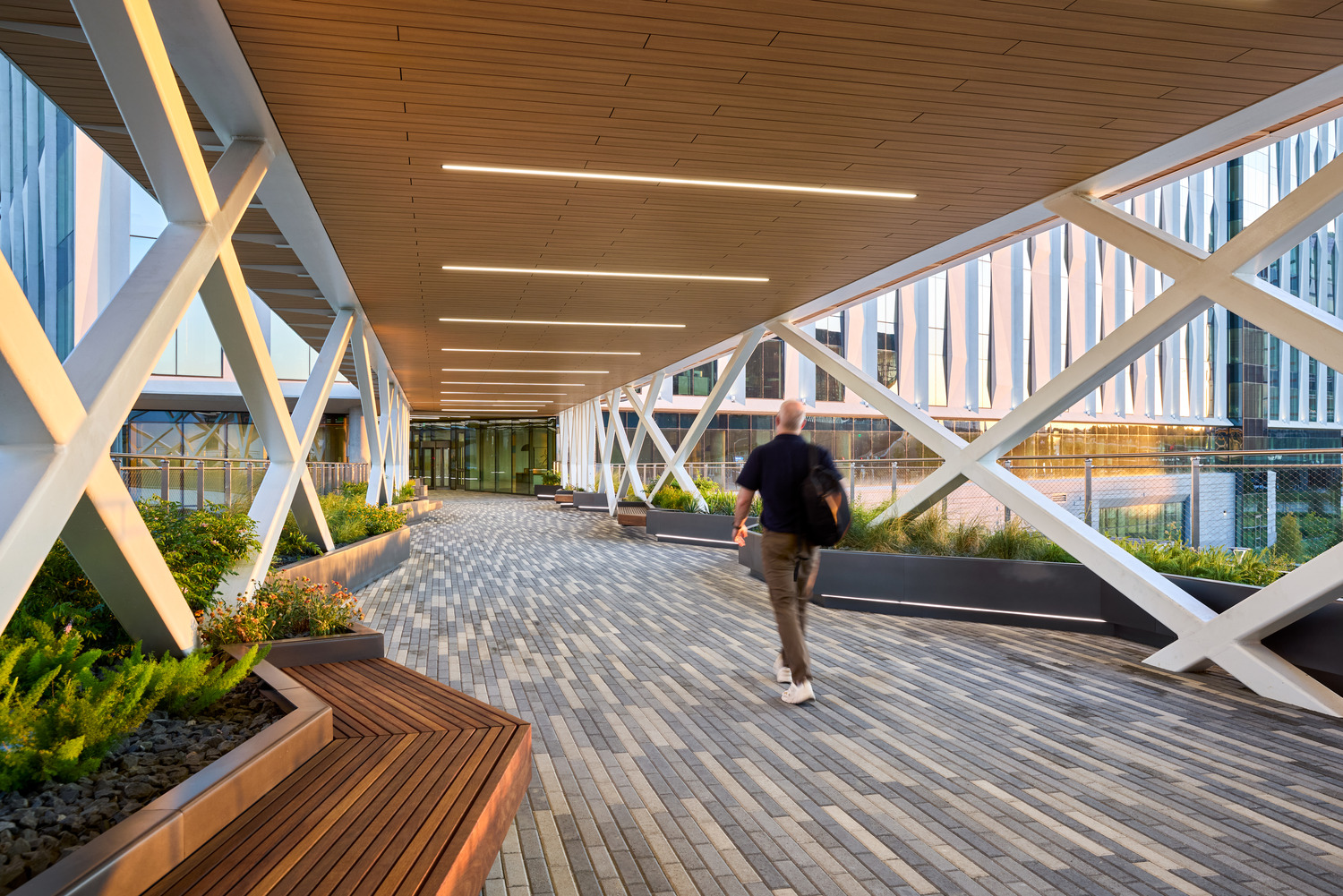
The campus will stand as a physical representation of the Wells Fargo brand — expressing stability, transparency, fiscal responsibility, creative spirit, and a deep commitment to our environment and future.
Good for the environment, good for the people
With carbon reduction, energy, and water conservation goals well above current benchmarks, this facility promises to be an industry leader setting new standards for corporate campuses. With bold commitments, Wells Fargo demonstrates their willingness to take action to combat climate change and provide a positive workplace environment for up to 5,000 team members in the greater DFW area.
Workplaces designed around wellness and sustainability are known to attract top talent as today’s workforce seeks organizations whose values align with their own. Other projects Corgan has designed like the Toyota North American Headquarters and Copper Sky Development prioritize sustainability efforts in the built environment recognizing that by doing right by the environment they give back to the community, align with environment, social, & governance (ESG) criteria, and add to their long-term bottom line.
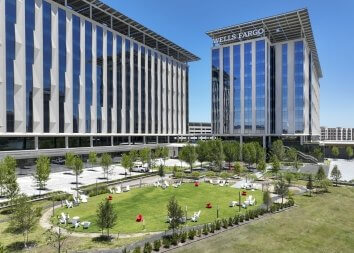
Harnessing power
A project is considered net positive when the building generates more energy on the site than it can consume, enabling it to give power back to the utility grid or use it for something else. Power can be created on-site in a number different of ways: nearby water can generate hydroelectric power; wind and solar power are available where it makes sense in certain geographic regions; and glazing for access to sunlight can harness power from natural resources for a more sustainable built environment.
The sustainable design approach for this new 850,000 square-foot project targets LEED Platinum with special attention paid to site planning and building orientation, a façade design that mitigates heat gain, solar panels, regionally sourced materials, lighting interventions, and interstitial biophilic elements throughout the space.
Sustainability initiatives for the Wells Fargo project include:
- Storm and grey water collection storage from the nearby lake
- High use of regionally sourced construction materials
- Dedicated open stairs and a covered walkway to reduce elevator usage and promote wellness
- Narrow and open floor plans to allow for natural daylighting
- Solar panels on the parking garage and buildings to offset yearly energy usage
- Outside air units to improve HVAC efficiency
- Electrochromic glazing for intelligent daylight management on the façade
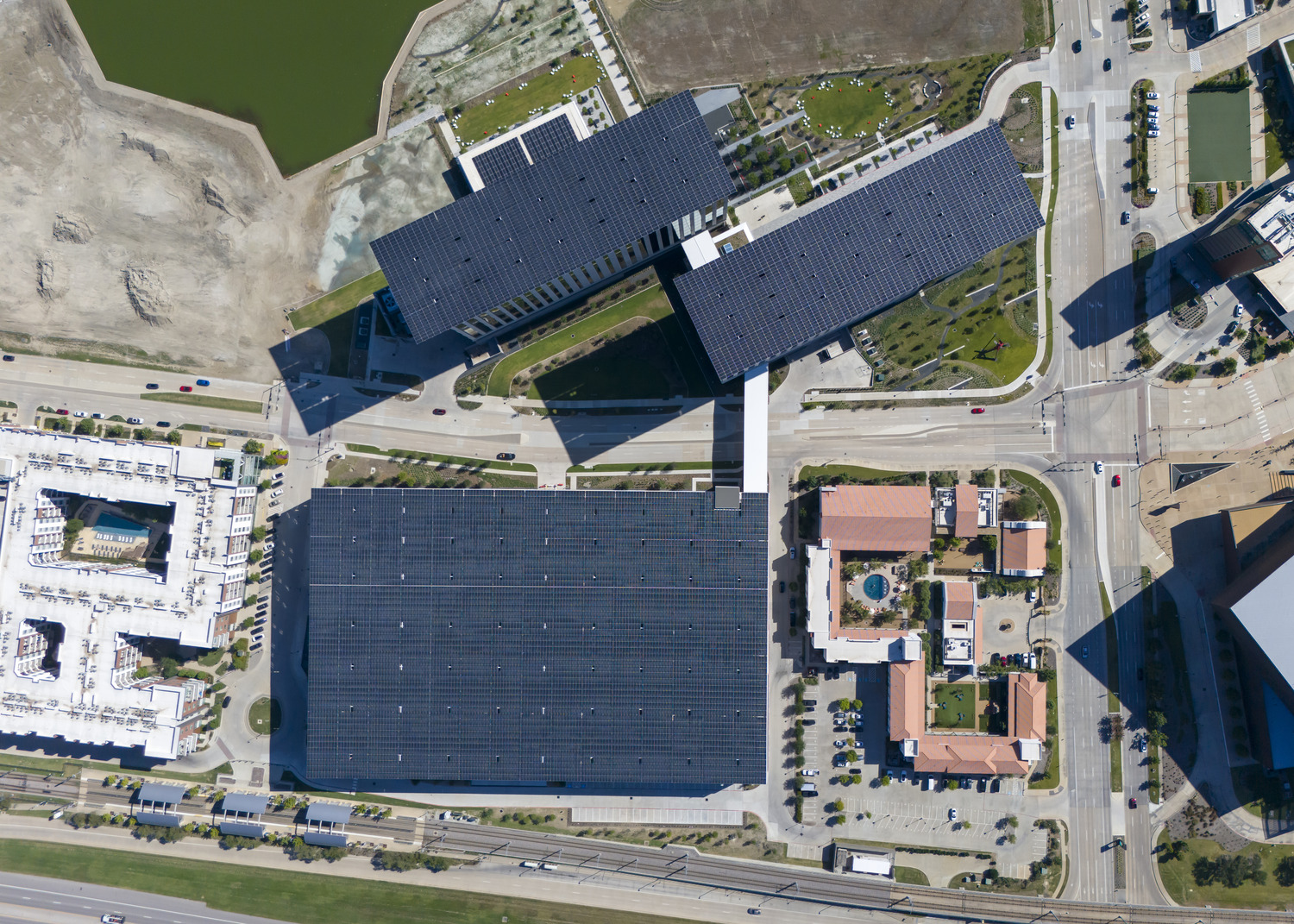
The Future of Sustainability
We anticipate major disruptors in the next several years with the convergence of wind and solar energy, vehicle autonomy, fuel cell power generation, AI technology, and other advancements. These changes will influence architecture and push the boundaries of sustainable design. Wells Fargo's newest campus is leading the way.
